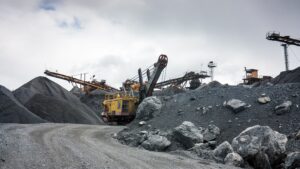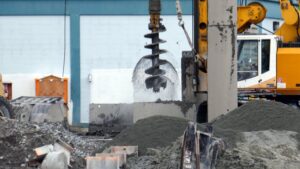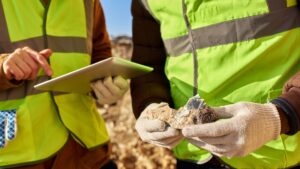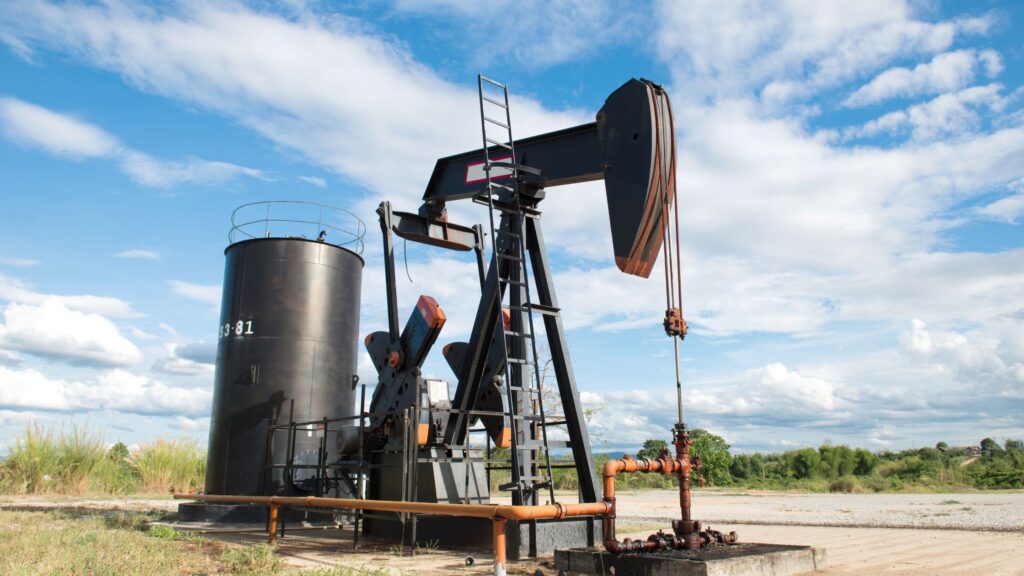Without it, we wouldn’t have the necessary materials for our everyday necessities, from electric cars to wind turbines. This article aims to delve into the fascinating world of mineral exploration, providing a detailed account of its processes, stages, implications, and impact.
What is Mineral Exploration?
Mineral exploration refers to the methodical process of locating and estimating the extent of mineral deposits in the Earth’s crust. The goal of mineral exploration is to discover ore bodies (concentrated deposits of minerals) that can be mined economically. This essential industry activity involves several stages, from preliminary research and data analysis to detailed drilling and sampling.
Each step of the process yields valuable data, enabling exploration companies to make informed decisions about whether to proceed with mining operations.
A short history of mineral exploration
The history of mineral exploration is as old as civilization itself, beginning with early humans’ search for stones and metals to make tools.
The Middle Ages brought about the application of scientific methods, leading to more systematic mineral exploration. The Industrial Revolution marked a significant upturn, with demand for coal, iron, and other minerals driving exploration efforts.
The 20th century marked a significant turning point, as advancements in technology, like satellite imagery and geophysical surveys, transformed mineral exploration, making it more precise and efficient.
Today, mineral exploration is a complex, multidisciplinary activity that leverages state-of-the-art technology to discover new mineral resources and ensure the sustainability of our modern society.
Why is mineral exploration important?
As mineral extraction underpins the mining industry, a cornerstone of many economies, it is critical for several reasons.
Firstly, it fuels the global economy, with mining companies generating substantial revenue from mineral extraction.
Secondly, mineral exploration supports technological advancements. Many of the devices we rely on daily, such as smartphones and electric cars, require specific minerals, which can only be supplied through effective mineral exploration.
Finally, mineral exploration plays a pivotal role in strategic planning for governments and industry, aiding in understanding the availability of essential commodities and informing long-term planning and development decisions.
What are the main mineral exploration stages?
The process of mineral exploration is akin to solving a complex puzzle. The process unfolds in distinct stages, each vital to achieving the ultimate goal of locating a profitable mineral deposit.
Reconnaissance and Target Generation
This preliminary stage involves conducting comprehensive research and data analysis to identify areas with potential mineral deposits. Exploration companies use various tools like geological maps and satellite photos to generate targets for further exploration.
Claim Staking and Permitting
Once potential areas have been identified, companies must secure the rights to explore these lands. This can be done through claim staking or lease agreements. Additionally, companies must obtain necessary permits and licenses to commence exploration activities.
Surface Exploration
Surface exploration involves conducting surface-based activities like geological mapping, geochemical sampling, and geophysical surveys to gather data and refine exploration targets. This stage often uncovers “clues” on the surface that may indicate the presence of mineral deposits below ground.
Early-Stage Exploration
At this stage, companies use detailed exploration techniques such as drilling shallow holes, trenching, and detailed sampling to gather more accurate data about potential mineralization and assess the economic viability of the deposit.
Core Drilling
Core drilling entails drilling deeper into the earth to extract core samples of the subsurface rock. These samples provide valuable information about the composition, structure, and quality of the potential mineral deposit.
Resource Modeling
Following drilling and sampling, a three-dimensional model of the deposit is created. This model estimates the deposit’s size, grade, and quality, which are crucial factors in determining its economic viability.
De-Risking
This stage involves further studies and assessments to evaluate the technical and financial feasibility of developing the deposit. These assessments can include metallurgical testing, environmental impact studies, and economic evaluations.
Production Decision
Based on the results of the previous stages, a final decision is made about whether to proceed with mining and production. This decision takes into account various factors such as the size and grade of the deposit, market conditions, regulatory requirements, and financial considerations.
Development and Construction
If the production decision is positive, the focus shifts to securing financing, obtaining final permits, and beginning construction of the mine infrastructure and associated facilities.
Production and Operation
Once the development is complete, mining operations commence. This stage involves extracting the mineral resources, processing them, and managing ongoing operations, including environmental monitoring and safety measures.
What is required to start mineral exploration?
Embarking on a mineral exploration project is no mean feat. It requires a variety of factors to be considered, among which include regulations, a skilled team, a clear understanding of the laws, permissions, ownership of mineral rights, and access to necessary equipment.
- To conduct mineral exploration activities, an entity must adhere to various laws and regulations. These regulations typically dictate the rights to explore a specified area and are controlled by the government of the country in which the exploration is to take place.
- A proficient team, composed of geologists, engineers, and other technical personnel, is indispensable. This team is responsible for planning and carrying out the exploration projects. Their knowledge and expertise in various fields such as geology, chemistry, physics, environmental science, and more, determine the venture’s success.
- Acquiring permissions for mineral exploration often involves numerous complex steps, including claim staking, landholder negotiations, and gaining approval from government authorities. These steps could also entail completing environmental impact assessments and community consultations, particularly in sensitive areas.
- Ownership of mineral rights is another crucial element. These rights give the holder legal authority to explore and mine at a specific site. In some jurisdictions, these rights may be owned by the landowner, while in others, they may be held by the government.
- Lastly, the right equipment, tools, and technology are crucial to the exploration process. This may range from basic geological tools, such as hammers and hand lenses, to more advanced equipment like drill rigs and geophysical instruments.
What are the machines and tools required for mineral exploration?
Some of the most important tools and machinery in mineral exploration are:
- Geological Hand Tools: This includes tools like rock hammers, hand lenses, compass clinometers, which aid in initial fieldwork and sample collection.
- Sampling Equipment: Equipment such as core boxes, sample bags, and augers are used for collecting and storing samples.
- Drilling Equipment: Drilling rigs, drill rods, and bits are required for extracting rock cores or creating boreholes.
- Geophysical Equipment: This can include magnetometers, gravimeters, seismic instruments, and electrical resistivity tomographs. They are used to measure various properties of the earth’s subsurface.
- Geochemical Analysis Instruments: These could be portable XRF analyzers or laboratory-based equipment for analyzing the composition of rock, soil, and water samples.
- Geological Software: Geoscientists use software for data analysis, interpretation, and visualization. Examples include GIS software, 3D modeling software, and statistical analysis tools.
What are the Different Methods & Techniques used in mineral exploration?
Mineral exploration leverages a wide range of methodologies and techniques, often used in combination, to identify and evaluate potential mineral deposits. Here are some key ones:
- Geological Mapping: This involves the detailed mapping of the surface geology, including the distribution of different rock types and structures.
- Geochemical Surveys: Geochemical analysis involves examining the concentration of certain elements or minerals in soil or rock samples. The presence of ‘indicator minerals’ could signify a larger deposit beneath the surface.
- Geophysical Surveys: Geophysical surveys use advanced technology to measure the physical properties of rocks and soils. Techniques may include resistivity measuring, magnetic surveys, or seismic surveys. The aim is to uncover features beneath the surface that could indicate the presence of minerals.
- Remote Sensing and Satellite Imagery: In the modern world, satellite photos play an increasingly important role in mineral exploration. By capturing images from different wavelengths of light, geologists can identify minerals on the Earth’s surface, and even under vegetation.
- Drilling: Drilling is a direct method of exploration and is done to obtain a physical sample of the rock. It involves extracting cylindrical samples (core) from the Earth, allowing geologists to analyze the type and grade of minerals present.
- Trenching and Pitting: These are surface excavation methods used to expose bedrock for detailed sampling and examination.
What are the benefits of mineral exploration for the economy?
The benefits of mineral exploration extend far beyond the discovery of valuable mineral resources. Indeed, the potential economic benefits are manifold, from job creation to infrastructure development, taxation revenue, and community investment.
- Job Creation: Mineral exploration and subsequent mining activities generate significant employment opportunities, both directly and indirectly. Direct employment comes from jobs in exploration, mining, processing, and transportation, while indirect employment is created in supporting industries like equipment manufacturing and food services.
- Infrastructure Development: Mining often necessitates the development of infrastructure such as roads, power lines, water treatment facilities, and housing, particularly in remote regions. This development can also benefit local communities, fostering growth and development in these areas.
- Export Revenues: Minerals, especially precious ones, are highly valued on international markets. Countries rich in mineral resources often export these commodities, thereby earning substantial foreign exchange revenue.
- Tax Revenue: Mining companies usually pay taxes and royalties to governments, providing a significant source of revenue that can be invested back into public services like healthcare, education, and infrastructure.
- Community Investment: Mining companies often invest in local communities by funding projects like schools, hospitals, and training programs. These initiatives can help enhance the quality of life for local residents and foster sustainable development.
- Supply Chain Development: Mining activities can stimulate the growth of local and regional supply chains, promoting business opportunities for a wide array of goods and services.
- Scientific Advancements: Mineral exploration and mining contribute to our understanding of the earth’s geology and provide valuable data for scientific research. The development of technologies for exploration and extraction can also drive innovation in related sectors.
Environmental Impacts and Sustainability of Mineral Exploration
While mineral exploration and mining bring numerous economic benefits, they also present significant environmental challenges. These include habitat destruction, pollution of air and water, and potential displacement of local communities. However, the industry has made substantial progress in mitigating these impacts through advances in technology and the adoption of sustainable practices.
- Habitat Destruction: Mineral exploration, particularly when it involves drilling or trenching, can disturb local ecosystems. However, exploration activities are increasingly being designed to minimize surface disturbance, and companies are required to rehabilitate the land after their activities.
- Pollution: The process can generate waste that, if not properly managed, can pollute the air and water. The industry is continually innovating to reduce waste and improve waste management.
- Water Use: Mining processes often require significant amounts of water. Companies are increasingly implementing water recycling programs and other measures to reduce their water use and prevent contamination of local water sources.
- Greenhouse Gas Emissions: Mining and processing of minerals can produce greenhouse gases, contributing to climate change. However, many companies are implementing strategies to reduce their carbon footprint, such as using renewable energy sources and improving energy efficiency.
- Community Impacts: Mining activities can also impact local communities, sometimes requiring the displacement of people. However, companies are increasingly engaging with local communities and seeking their consent before commencing exploration and mining activities.
- Rehabilitation and Closure: Mining companies are often required to develop a closure plan before a mine is opened. These plans detail how the land will be rehabilitated after the mine’s closure to ensure it can be used for other purposes in the future.
- Sustainable Practices: Many mining companies now prioritize sustainable practices, incorporating environmental and social considerations into their business strategies. This includes striving to minimize their environmental footprint, investing in the communities where they operate, and working to create lasting benefits for these communities.
What are Important Mineral Exploration Laws?
Mineral exploration is regulated by a range of laws and regulations that vary by country and sometimes by region within a country.
These laws address a variety of aspects, from the ownership and leasing of mineral rights, environmental impact assessments, health and safety standards, to post-closure land rehabilitation. A few notable laws and regulations include:
The Mining Act
The General Mining Act of 1872 forms the bedrock of mining legislation in the United States. This federal law allows citizens to explore for minerals and establish rights to these resources on public land managed by the federal government.
Prospecting, exploration, and extraction activities are all governed by this Act. Furthermore, it sets out rules for acquiring mineral rights, referred to as claims. The Act dictates that mineral deposits in lands belonging to the United States are free and open to exploration and purchase by citizens, with obligations for titleholders clearly outlined.
For instance, in order to maintain a mining claim, the claimant must perform a certain amount of work each year or make payments in lieu of this work.
Environmental Protection Laws
Environmental conservation is a crucial element of the mining industry in the United States. Multiple Environmental Protection Laws have been enacted to prevent or minimize the impact of mining on the environment.
The National Environmental Policy Act (NEPA) is a key piece of legislation in this regard. It requires federal agencies to consider environmental impacts before making decisions such as issuing permits for mineral exploration.
An Environmental Impact Assessment (EIA) is generally required before exploration can commence, focusing on the potential environmental effects of proposed activities. The aim is to identify, prevent, and mitigate any potentially significant adverse environmental effects.
Health and Safety Regulations
The Federal Mine Safety and Health Act of 1977, or Mine Act, forms the cornerstone of Health and Safety Regulations in the American mining industry.
The Act sets forth comprehensive standards for mine design, equipment safety, hazard communication, and emergency response. It also established the Mine Safety and Health Administration (MSHA), a federal agency responsible for enforcing these standards.
The regulations aim to ensure the health and safety of workers in mines, mandating a range of protective measures such as appropriate training, regular inspections, and immediate reporting of accidents and hazardous conditions.
Indigenous Rights Laws
The protection of Indigenous rights is a vital part of the legal landscape in the United States. In areas where Indigenous communities reside, specific laws exist to safeguard their rights and interests.
The Native American Graves Protection and Repatriation Act (NAGPRA) and the National Historic Preservation Act (NHPA) require consultation with Native American tribes when federal actions, including mineral exploration, may affect tribal lands or historic sites.
Consultation can range from notifying tribes about planned activities to seeking their input or consent. The aim is to respect and protect Indigenous cultural heritage while ensuring that the communities can actively participate in decision-making processes affecting their lands.
Safety Regulations in the Mineral Exploration
Safety is paramount in the mineral exploration industry. Both regulatory bodies and mining companies themselves enforce stringent safety protocols to protect workers and the environment.
- Regulatory Standards: Many countries have strict regulations governing safety in mineral exploration. These often include rules on equipment maintenance, hazard identification and control, emergency preparedness, and worker training.
- Industry Best Practices: Beyond compliance with regulations, many companies adopt industry best practices to enhance safety. These might include regular safety audits, risk assessments, comprehensive training programs, and a strong culture of safety.
- Worker Safety: Protecting workers from occupational hazards, such as exposure to harmful dust or noise, is a key focus of safety protocols. Personal protective equipment (PPE) is essential, along with regular health check-ups and appropriate rest periods.
- Environmental Protection: Safety protocols also aim to protect the environment. This involves careful waste management, water conservation, and minimizing disturbance to local ecosystems.
- Accident Prevention: Accident prevention is a critical component of safety protocols. This requires ongoing monitoring and maintenance of equipment, safe work procedures, and emergency response plans.
How Long Does Mineral Exploration Typically Take?
In general, from the start of exploration to the commencement of mining, it can take anywhere from 5 to 10 years or more.
The duration of mineral exploration varies widely depending on the specifics of the project. Preliminary surface investigations can take anywhere from a few months to several years. If promising mineral deposits are found, further exploration, including drilling, may take an additional several years.
Technology Developments in the Mineral Exploration
Advancements in technology have revolutionized mineral exploration. Some of the modern and novel technologies used in the industry include:
- Remote Sensing: Satellite imagery and aerial photography can provide valuable information about the earth’s surface and help identify potential exploration areas.
- Geographic Information Systems (GIS): GIS is used to analyze and visualize geographical data, aiding in the identification of promising exploration areas.
- 3D Seismic Imaging: This technology allows for a detailed view of underground structures and can help in the precise location of mineral deposits.
- Artificial Intelligence and Machine Learning: AI and ML are increasingly being used to analyze exploration data and predict where valuable mineral deposits may be found.
- Automated Drilling and Sampling: Automation can increase the efficiency and safety of drilling and sampling operations.
- Blockchain Technology: Blockchain can improve transparency and traceability in the mineral supply chain.
Looking ahead, the industry is set to continue embracing new technologies that improve efficiency, safety, and environmental sustainability.
Conclusion
Mineral exploration is a vital activity that feeds into numerous sectors of the economy. While it poses significant challenges, including high costs, safety risks, and potential environmental impacts, the industry continues to evolve and improve.
The adoption of robust laws and regulations, coupled with advancements in technology, are making mineral exploration safer, more efficient, and more sustainable than ever before.








